Do you remember a time when you’ve had to teach someone something? If it was your first time, you might have gotten lost explaining a complex topic, noticed your audience zone out, and pretty much completely failed at getting your point across. The struggle is especially true if you are trying to create a piece of learning content for the first time.
However, with the rise of Generative AI, brainstorming, planning, and creating content for learners has become as easy as the touch of a button: almost. That is, if you know how to write the right prompts and understand what makes learning content truly effective.
The WeSchool Education Team has come up with a tailor-made process you can follow even if you are not a content designer: a guided plan to use best practices of instructional design and prompt engineering to create different content to meet your unique training needs.
Let’s now explore how you can create content with the help of AI on the WeSchool platform in a few simple steps, even if you are not a content designer.
Instructional design is the process of planning the learning process that people are going to live. The process starts from a given situation of people who have specific knowledge and skills, and lands them in a new situation where they have new knowledge and skills on selected topics.
An instructional designer maps the path that learners are going to take to learn something new. First, they might identify key objectives: Which knowledge or skills will help people meet key goals? What’s stopping them from getting there? From there, a course topic emerges, and the course design process gets in full swing.
The instructional designer’s work is then to break a larger topic into smaller units and fill them up with content, activities, and assessments that will make up the learning path.
Learning design usually includes planning out an overall structure and sequence of a course or training program, and then, creating the individual pieces of content. Read on to see how to start with a course plan and then dive into the basic package of learning content that can be used to create any training course.
If you are beginning to plan a training program on any topic from scratch, a course outline is a good place to start. In short, it’s a high-level structure of a course that includes a list of skills or topics to be covered. There are several key elements to consider when planning a course, including:
- organizational goals, or KPIs, that the course will target
- learning objectives to help meet those KPIs
- existing skills and needs of the people taking the course
- kinds of instructional strategies that will be used
- times and spaces in which the course will occur
WeSchool’s in-house Education team has thoroughly studied emerging and best practices for engineering prompts to create a course outline keeping those elements in consideration. The result is: WeSchool’s AI Assistant. It’s a tool you can use to generate a course outline and quickly begin to create any course. Enter your specifications in the pre-set fields, and watch the suggested course outline appear, broken up into units and topics.
An example: Team training
Say you are designing a team training on how to use a project management tool. Using the AI assistant, you add your:
- Audience: Experienced team of Graphic Designers
- Topic or goal: Top strategies to use Asana for project management
- Course duration: 4 weeks
- Weekly time commitment: 2 hours
- Course format: Cohort-based
Now, it’s up to you to review and revise the output. Consider: Which topics are important to meet your learning and organizational KPIs? Which topics might you need to remove, add, or move around?
Let’s now see how to create specific types of commonly used training content.
Once you know the skill or topic you want to teach, you need to create some content that people can use to learn about it. You might want to start with a written resource, such as a document or presentation. Beyond the traditional static PDF, a written resource can become a source for critical thinking and discussion, by encouraging people to comment on it to share their ideas or ask questions.
- Static PDF
- Interactive PDF
- A text document
- A presentation
- A spreadsheet
An example: Employee onboarding
You might have to communicate key company policies to your employees. Let’s say you are writing a holiday leave policy from scratch. You can use WeSchool’s AI-supported Text Editor to help you get started. By using a basic prompt like: “Write a company holiday policy,” you can get some general ideas for where to begin: What is a holiday policy? How do employees use it? No confidential company information is involved.
From there, you can begin to add your own unique company specifications. You can rely on the AI capabilities to be your assistant throughout the process, for example by asking it to rephrase content to say in another way, emojify it if that fits your company’s style and tone, fix spelling and grammar, and even translate it into another language.
While creating a video has traditionally required intensive time, resources, and technical skills, by 2024 it’s become a popular and powerful teaching tool for anyone who’s got a smartphone. Just think of Tik Tok! It uses the microlearning format, or short content that focuses on one specific topic. It’s easy for anyone to view it on the go and go back to it when they want to. This is also an effective approach for a learning program.
An example: Customer education
Say you need to train a client on your various product features, like notifications, help desk functionalities, and usage tracking. You could do this in the format of microlearning video content. One video, one feature. With the help of AI, you can get support writing your video script. In this case, you could use WeSchool’s AI Writer to shorten text to make it more concise for a quick video, and change the tone to fit your unique organizational voice and brand, for example – making it academic, business, or even casual.
- Hour One
- Visla
- Synthesia
- Wondershare DemoCreator
An infographic is a way to communicate information or data using a mix of images, numbers, charts, or text. It presents complex information in a way that is visually appealing, accessible, and captivating. Infographics make it easier to remember information, both because they are interesting to look at and compartmentalize key take-aways.
Making an infographic even if you are not a content designer has never been easier with creative software like Genial.ly or Canva. These come with pre-built templates to suit any topic or brand. Any creation you make can be seamlessly embedded into your training path on the WeSchool platform simply by adding the link.
Tools you can use to create infographics:
- Genial.ly
- Canva
- Google Slides
- Microsoft PowerPoint
An example: A higher education course
Let’s say you are setting up an online university learning community about Fashion Merchandising. You decide to create an infographic about the new product catalog and price discount options.
You can use the AI Writer to help you get started with brainstorming which product categories to include by writing a prompt like: “Name some product categories in fashion merchandising,” and you will get an extensive list, ranging from apparel and accessories to fragrances and footwear. You can choose the ones most relevant for you and from here, ask the AI Writer to help you write descriptions and edit for clarity and tone. Before you know it, you’ve got your content draft! Now you can choose your infographic template, input your information, and embed it into the WeSchool platform to make it available to your community.
Written, video, and visual content is great for conveying information and helping people gain new knowledge. You can also take the engagement up a notch by letting people actively participate in and make decisions when using your content. Interactive activities include clickable maps, polls, games, and escape rooms, for example.
Software applications like Miro, Typeform, and Kahoot make it easy to build interactive content even with no prior experience. Then, you can paste the link to the interactive content you create to the WeSchool platform, and your users will have access to it without having to leave their learning path.
Tools you can use to create interactive activities:
- Miro
- Typeform
- Kahoot
- Genial.ly
- Mentimeter
- Google Suite
- Microsoft Office
- WebEx
For more information on embedding interactive content on the WeSchool platform, see: How to create, edit, and embed any type of learning content on WeSchool.
An example: Team onboarding
Interactive activities could be especially useful when onboarding teams, to create opportunities for more engagement and personalization.
Say you need to onboard a new Sales team member, and you want them to know about your international clients. You could create an interactive map, showing the locations and some key information using Genial.ly, and then embed the link on the WeSchool platform.
And, it’s easier than you might think: using the AI writer, you can quickly summarize information to include just the most necessary bits someone needs from Day 1. You can then update the content anytime, and it will reflect automatically in the learning path. Also, new members can see comments left by others, becoming immediately involved in the team discussion.
In addition to content and activities, assessments are an integral part of an effective learning experience. Quizzes and tests can be used to assess initial knowledge that participants have coming into your course, to provide feedback and support throughout the training process, and also, to evaluate growth and mastery at the end. Assessments help learners to gauge their progress, and for the course creator to adapt the learning material to improve the course.
An example: Upskilling
Say you are creating a course to upskill developers on using modeling software. There are some highly technical terms and precise information to remember, and you want to include a knowledge check in the form of an assessment. The AI Writer can help you quickly come up with definitions for the key terms you want to use.
From here, you have 10 types of assessments to choose from on the WeSchool platform, ranging from true/false and matching to written answers and video quizzes. You can pick the quiz type that is best for the assessment you are creating and for your particular learners, to suit every training need.
- True or false: A question to which the answer is either true or false
- Short answer: A specific response needs to be given to a question
- Multiple choice: One or more correct answers have to be selected
- Crossword: Words and definitions are assembled into a crossword puzzle
- Video quiz: Questions (true or false, short answer, open answer, or multiple choice) appear at different parts of a selected video
- Fill in the blank: Missing words have to be input into specific parts of a text
- Matching: Items to be clicked to match those in column 1 with those in column 2 (using any of the available integrations (text, image, video, links, etc)
- Pair the cards: Cards should be dragged to match correct pairs
- Open answer: A written answer to a question or prompt
- Reply with attachment: An answer submitted by attaching an external file or link
No matter the type of learning program you need to create, here are some key points to keep in mind in order to make sure your content is effective:
Is the objective and topic of the content clear? Does it fit into the larger goal of the learning program it’s a part of?
Is the content an appropriate level for learners (not too easy or difficult)? Do people need to have any prerequisite (pre-existing) knowledge or skills to be able to use this content?
Is the content format appropriate for the type of learning goal it’s aiming to achieve? Is the content format varied across different pieces of content?
How long should this content take people to interact with?
Will this content be used for online, hybrid, or face-to-face learning?
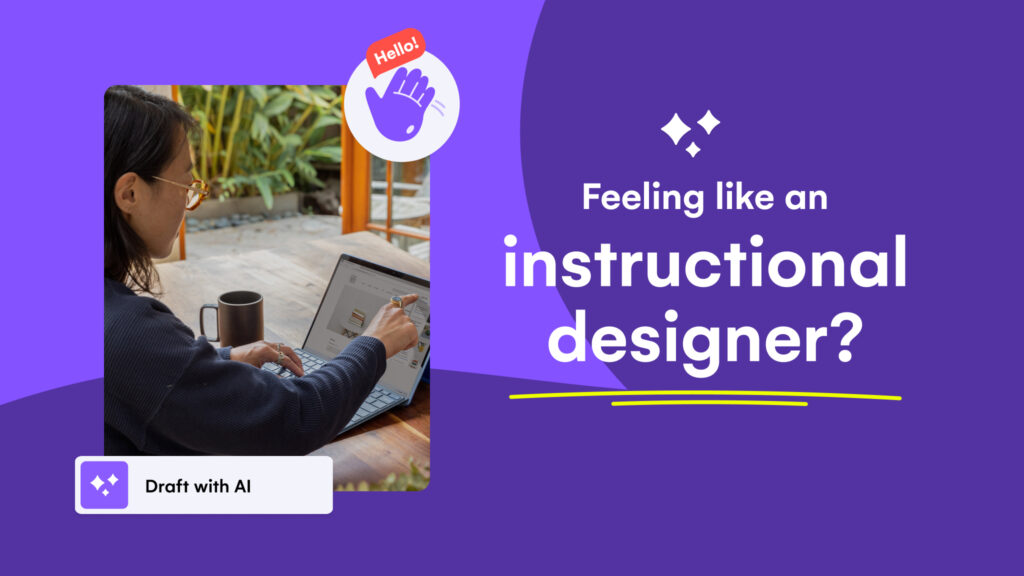

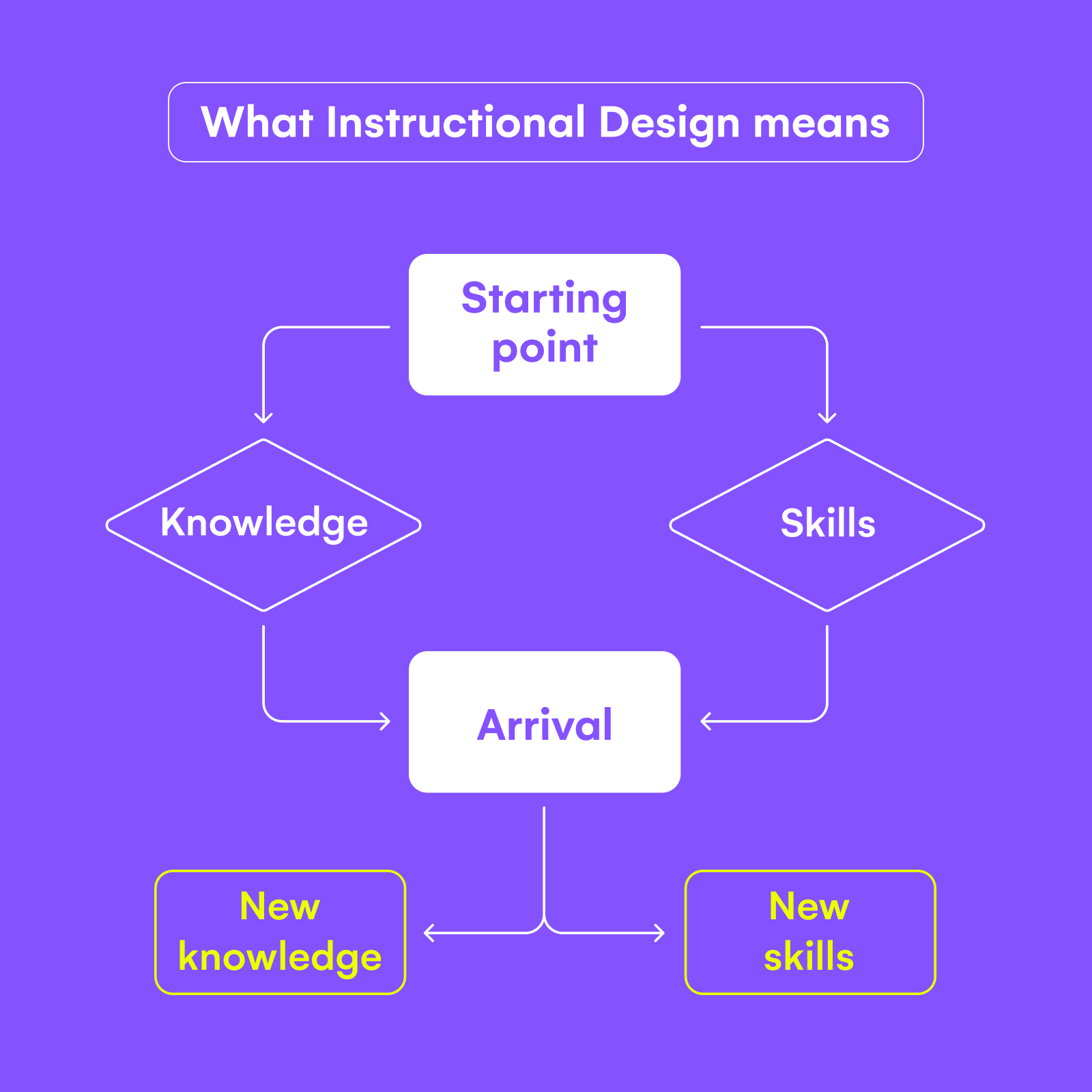
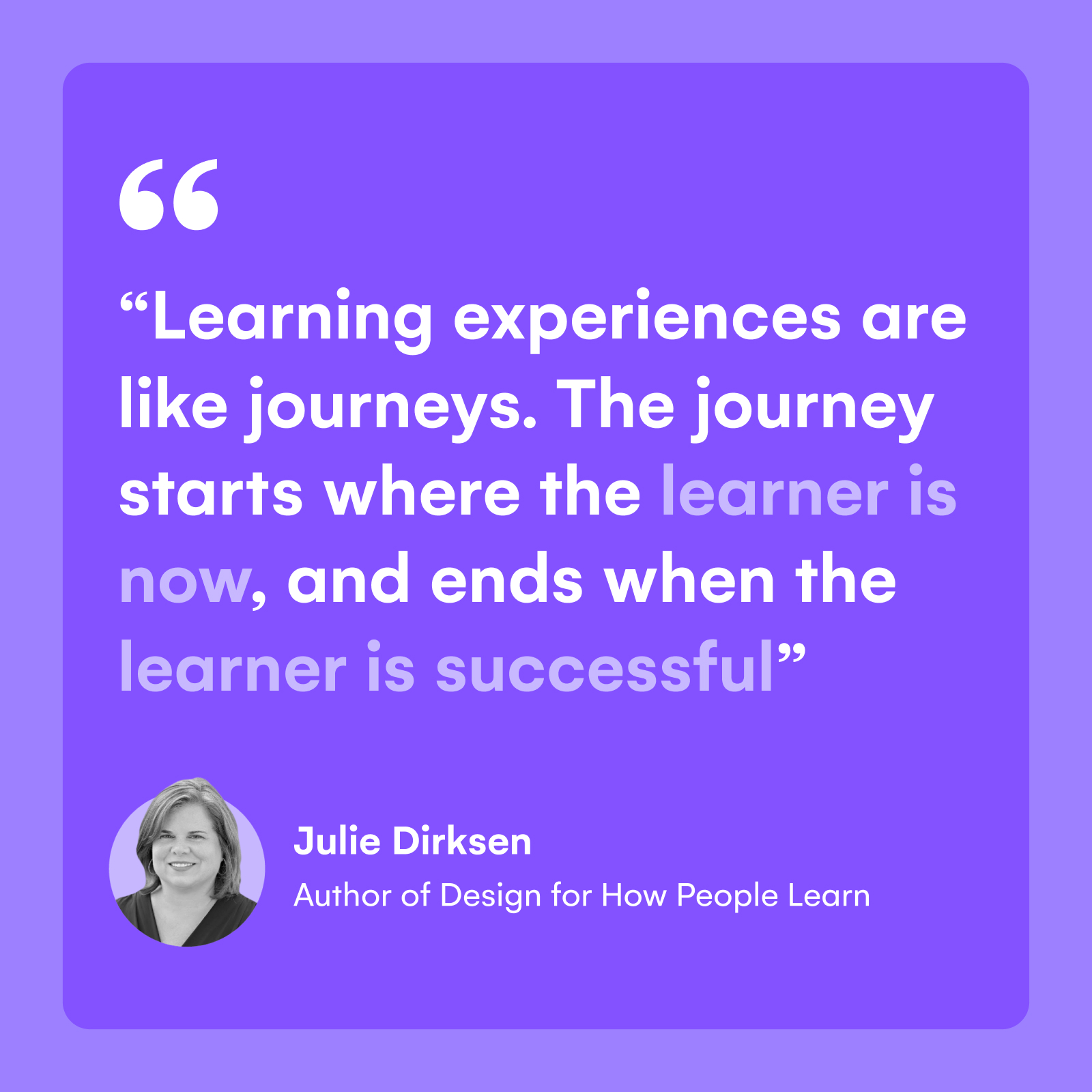
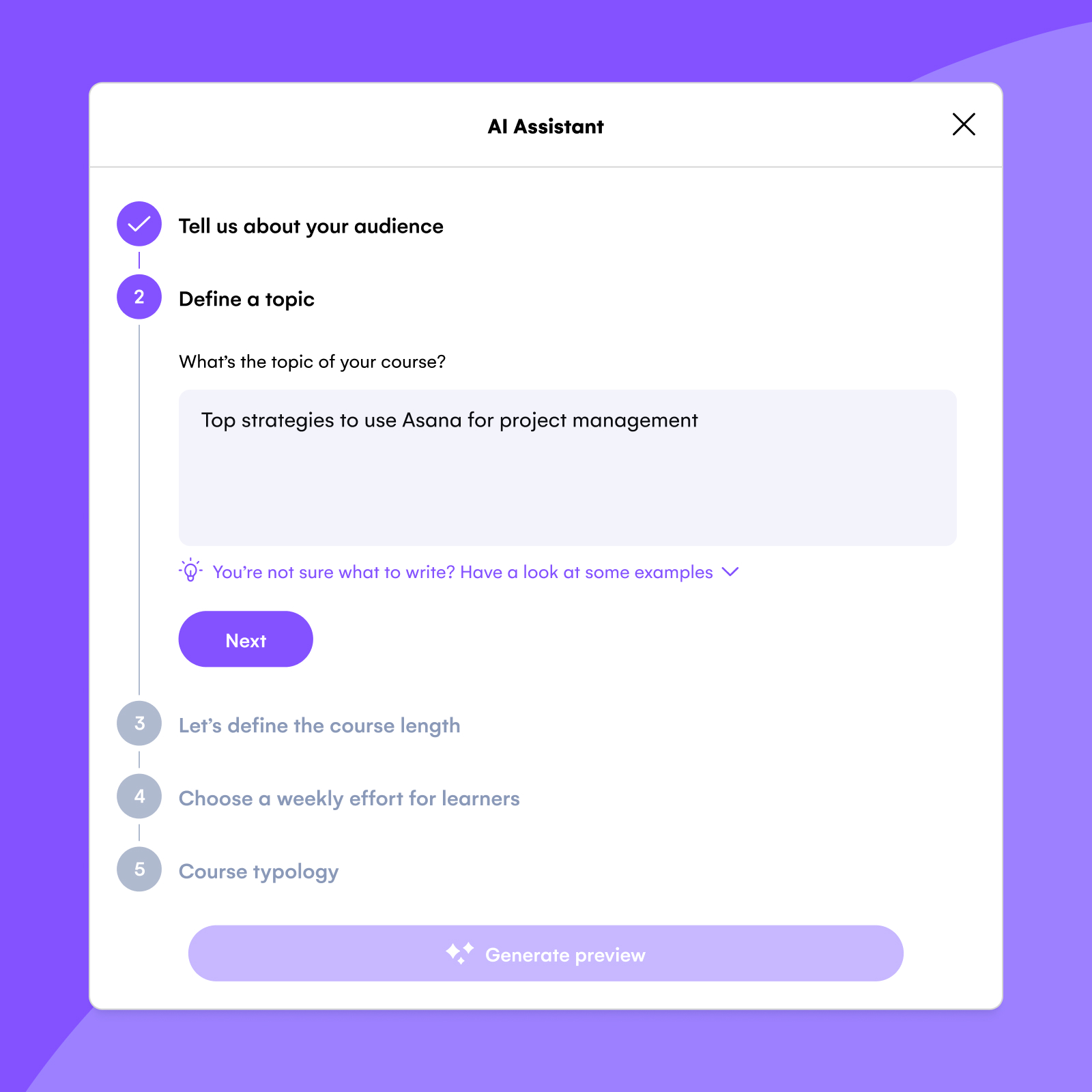
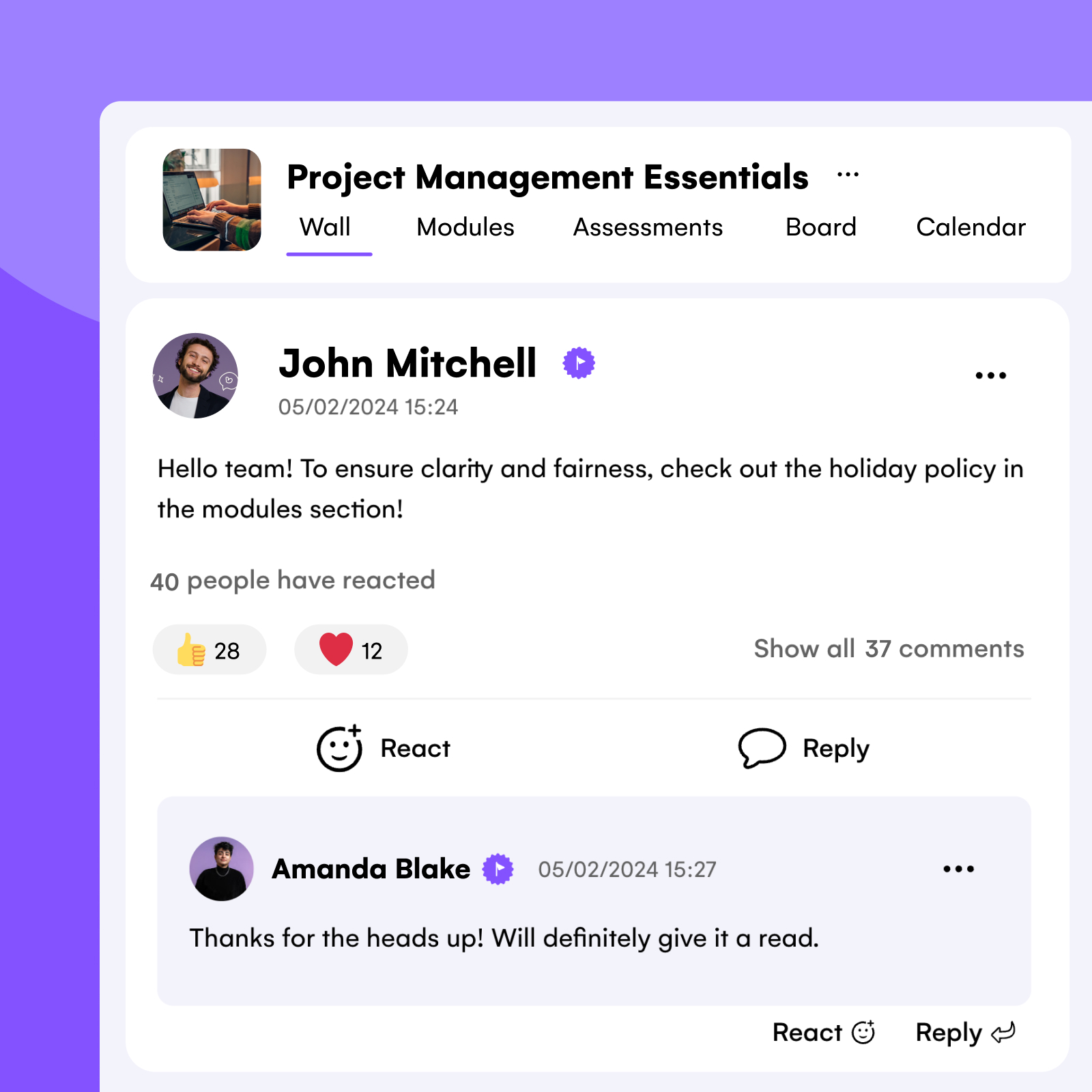
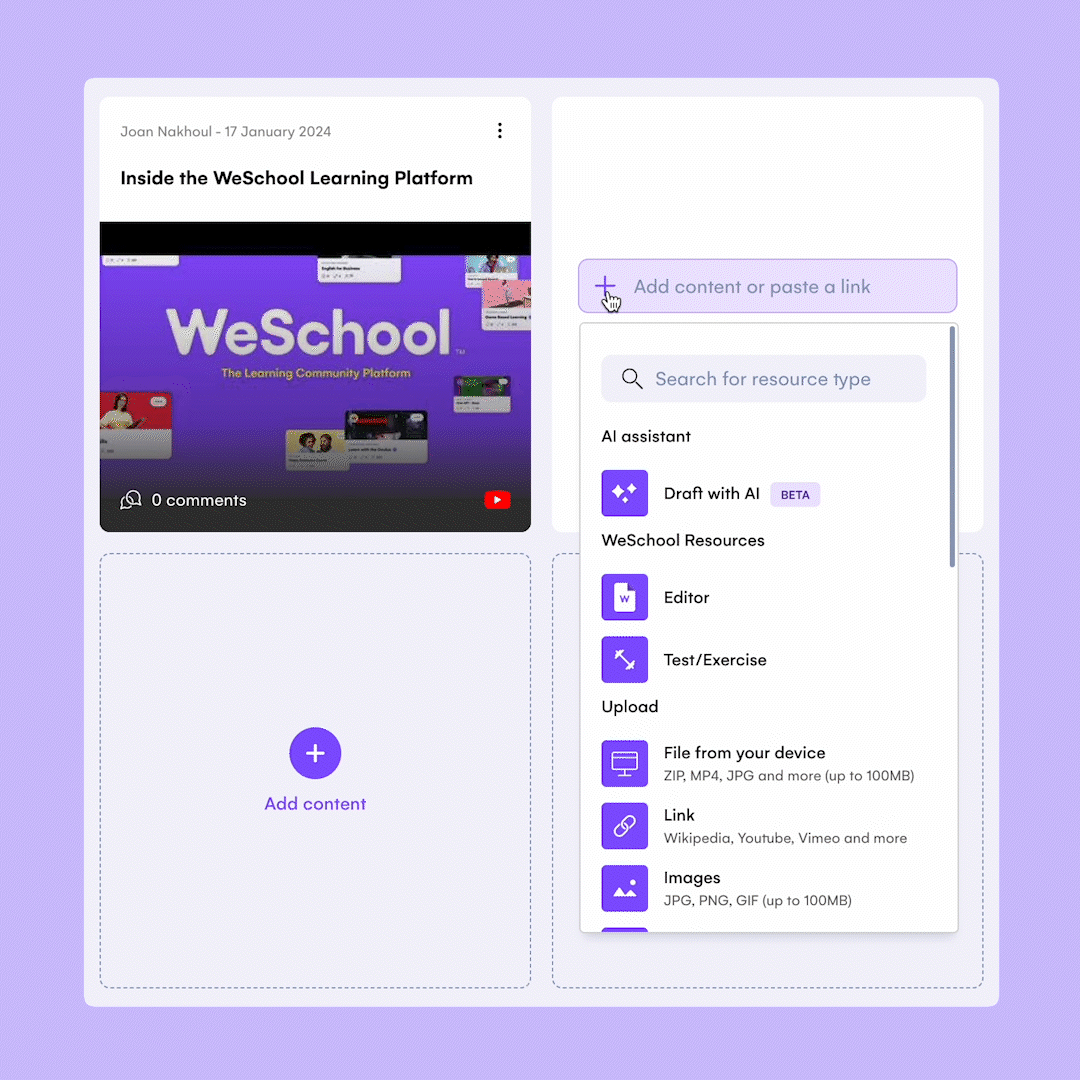
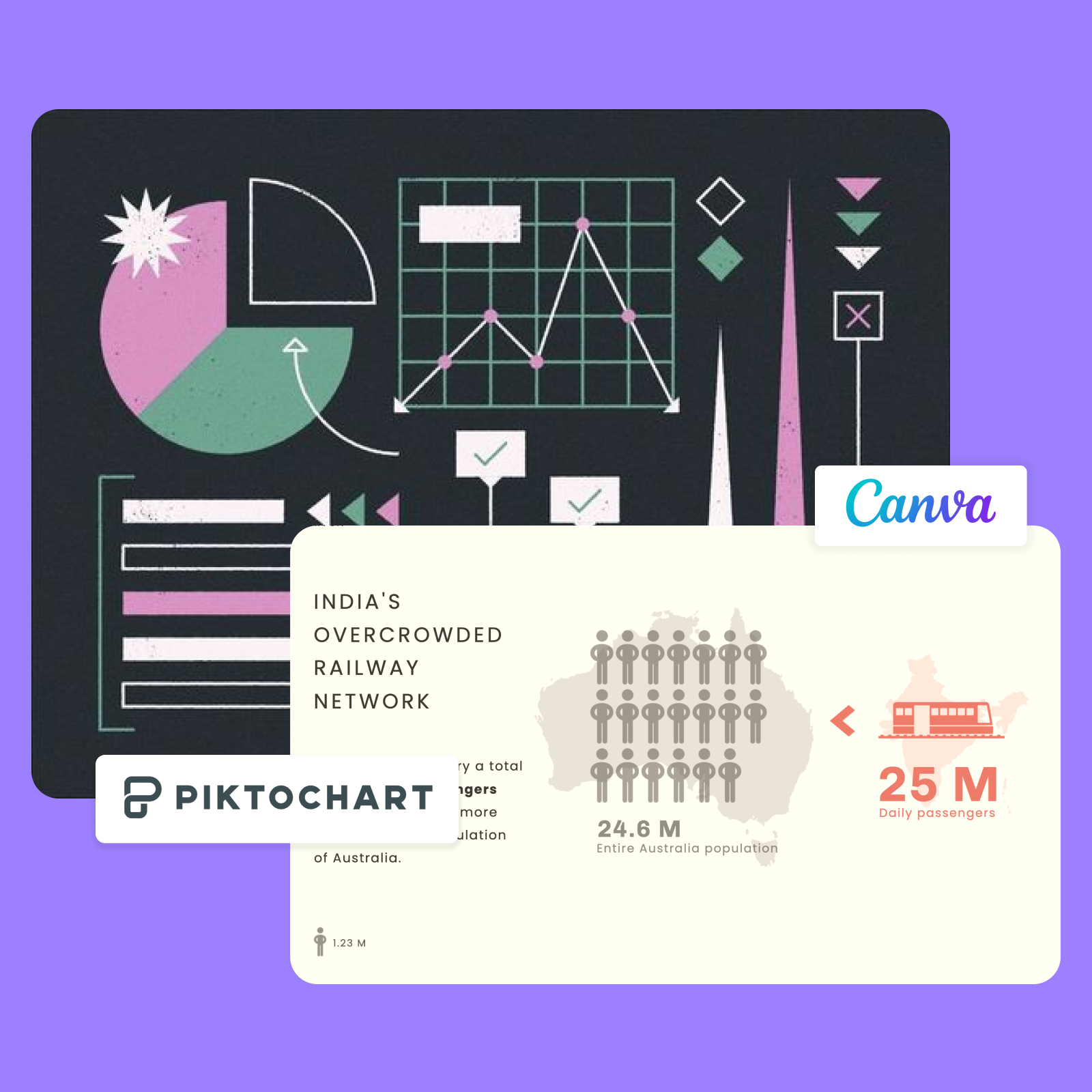
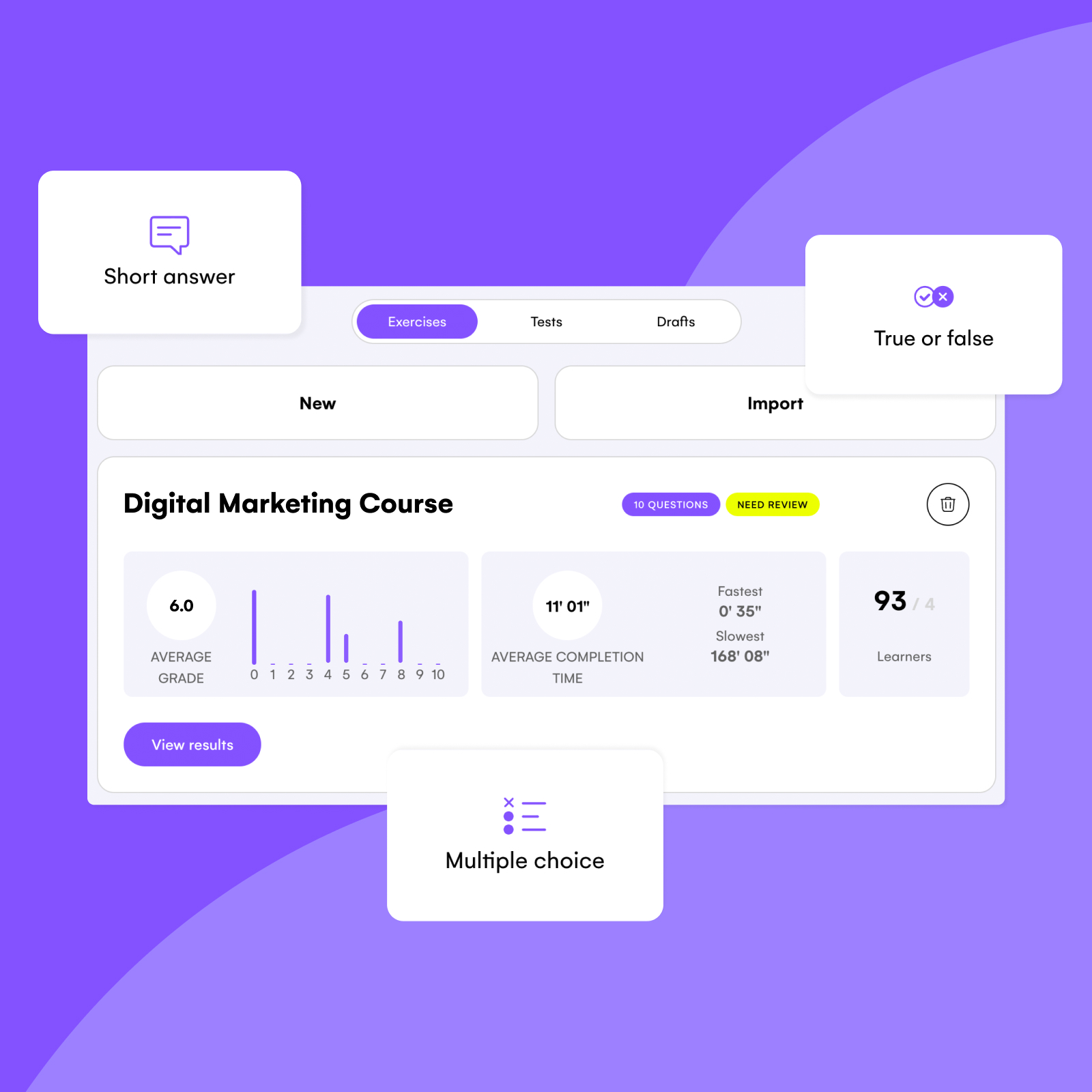
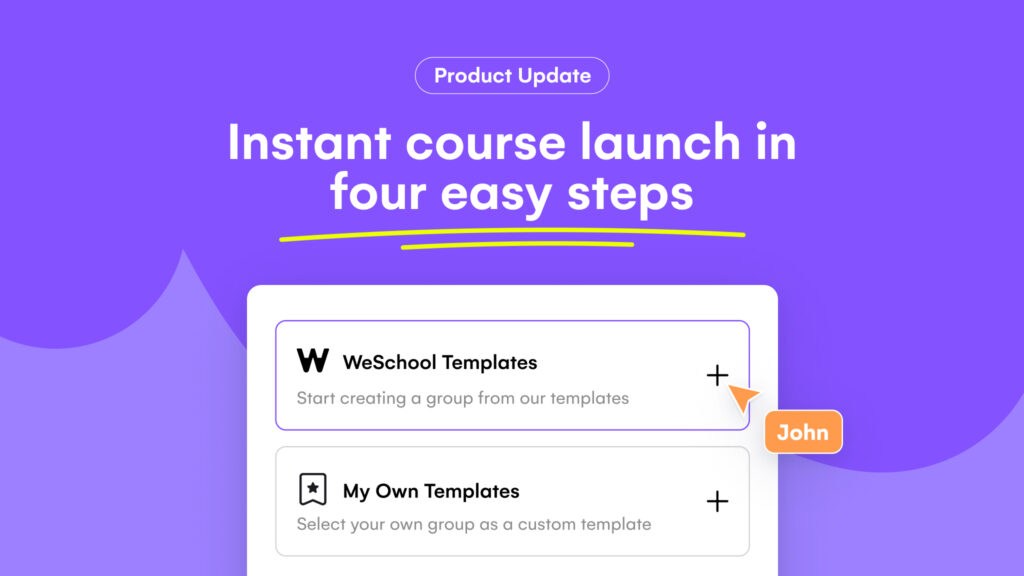
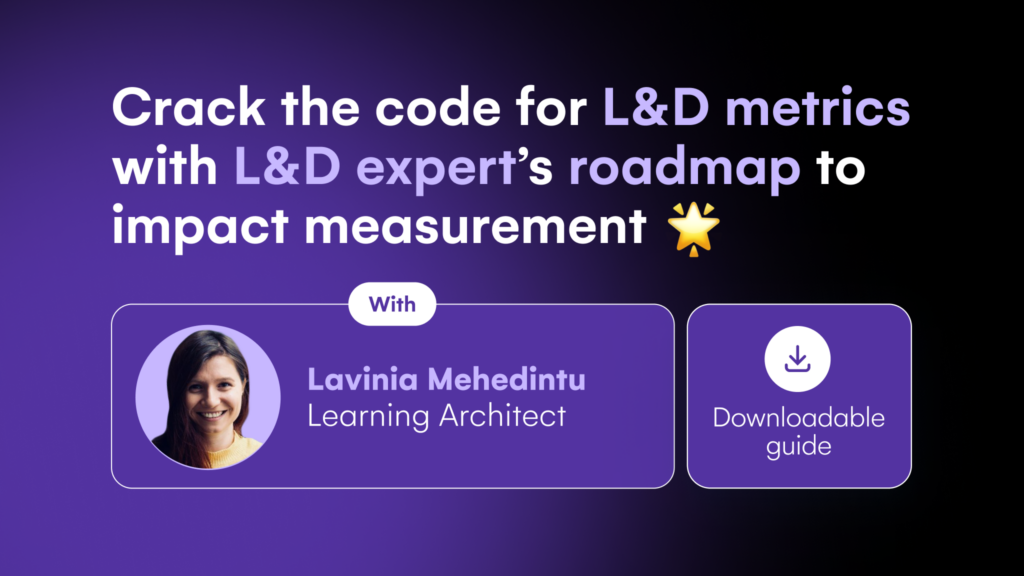
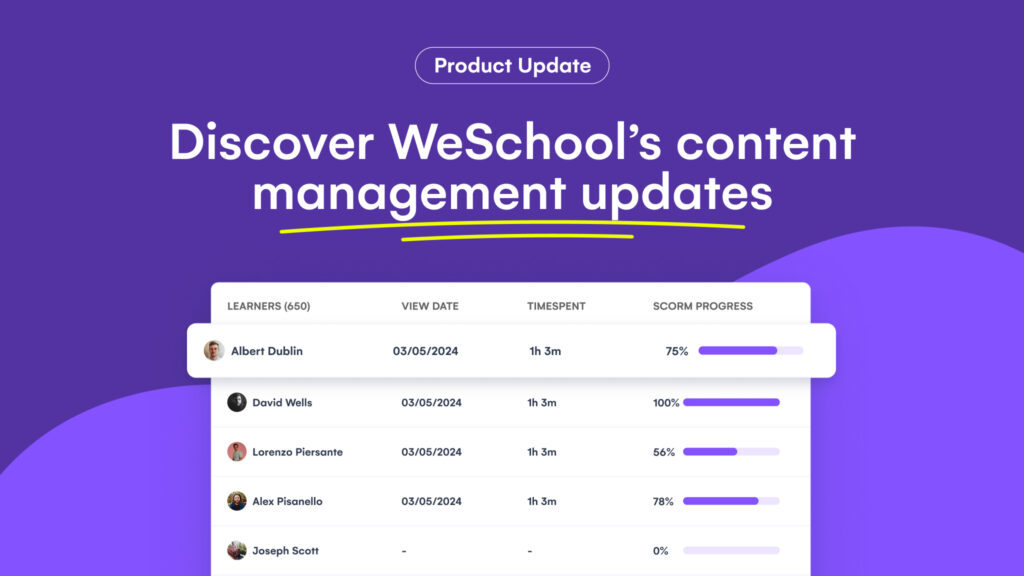
Reviews